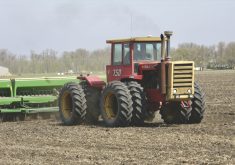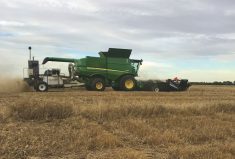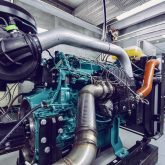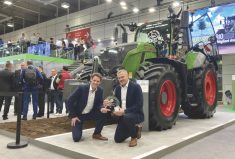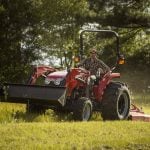As he stood in front of a group of more than 100 farm journalists from a wide range of countries, Bernard Krone, president of Krone, a family-owned forage equipment brand based in Germany, wanted us to know why his company had partnered with Lemken, another German manufacturer, to hold an international media event in northern Hungary.
The main reason was simple: both brands wanted to get reporters from across the world into a field to actually see their new equipment at work.
As part of his presentation to reporters at that event last summer, Krone discussed how his firm has navigated the downturn in the global machinery market. In its 2014-15 fiscal year, Krone’s revenue from its agricultural equipment division was around 540 million euros (about C$768 million). Krone said he expected their final 2015-16 numbers to be only slightly lower, meaning the brand was making it through the depressed markets relatively well.
“With only a single-digit decline in sales, we are doing much better than the industry in general,” Krone said.
But staying out in front of the pack means paying a lot of attention to markets that have big potential for sales. Like many other equipment manufacturers in Germany, a large percentage of annual sales come from exports. For Krone, that number is roughly 70 per cent, and the bulk of those sales come from North America.
No surprise, then, that I was one of three Canadian ag journalists invited to that field day.

Krone made it clear his brand — like a few others — hopes to grow its presence in the North American equipment market. To help do that, the company is moving its U.S.-based headquarters from Memphis, Tennessee, to a more central location in Shelbyville, Indiana. It’s a move Krone says will help it better serve the continental market. At a cost of US$12.5 million, the new site should be operational by the end of the year.
What exactly does the North American market offer to brands like Krone that are in the forage equipment business? A summary provided by the company’s director of sales and marketing, Martin Eying, who also spoke during the Hungarian event, reveals its potential. Of the roughly 30,000 round balers sold globally each year, he explained, about half of them are bought by North American farmers.
Read Also
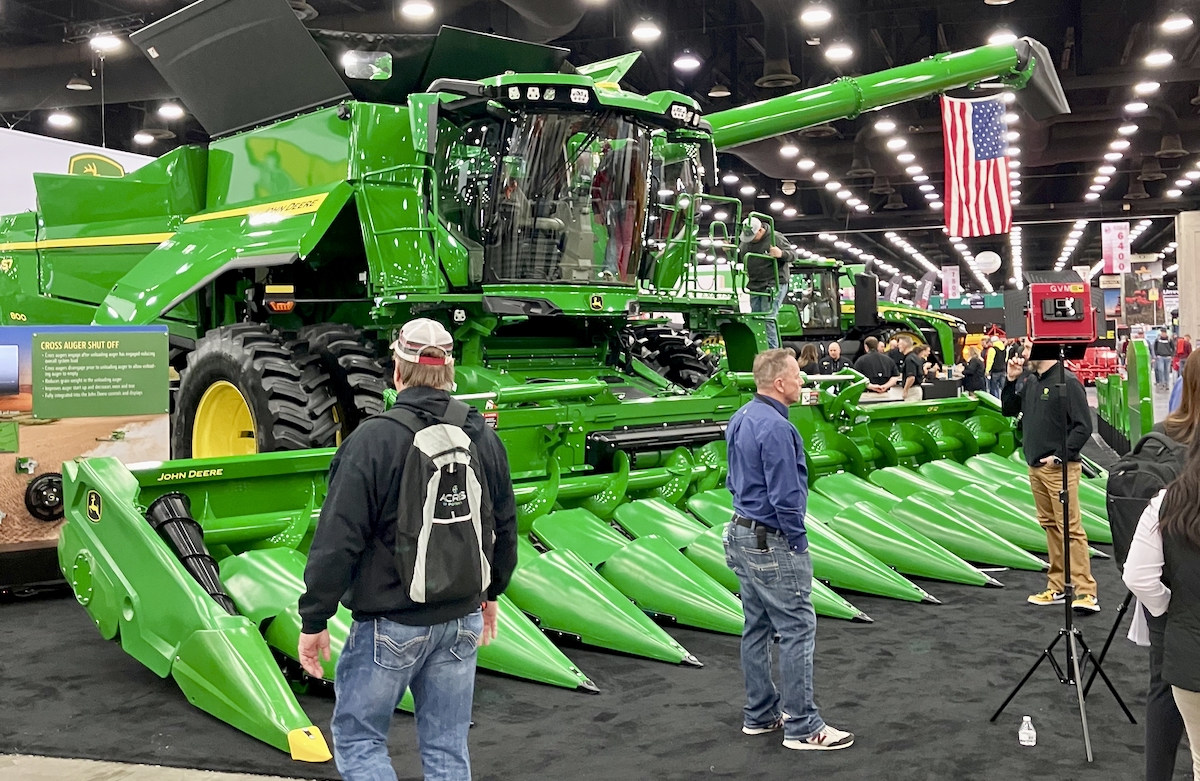
The pros and cons of new technologies
New farm technology hitting the marketplace can be awfully enticing, and it’s not been unheard of in years gone by…
Eying also pointed out that the number of manufacturers in China looking to muscle their way into the round and square baler production has increased significantly and is continuing to grow. So European brands like Krone may be feeling a sense of urgency to beat those upstarts to the North American pie.
But pushing aside already established and well-entrenched brands like New Holland and John Deere that currently dominate the forage equipment market in Canada and the U.S. will be no easy task. And it can’t be done by sitting on your hands. To try and give itself an edge, Krone has continued to pour a lot of investment dollars into R&D and infrastructure, despite the sluggish equipment market.
“During the period 2010 to 2013, we invested around 50 million euros (about C$70.8 million) in new buildings, new production lines and new technology,” said Krone.
One of those new technologies is the company’s Premos 5000 in-field pelleter, which could take forage harvesting in an entirely new direction, although it’s unlikely the Premos will have a big impact on the market on this side of the Atlantic in the near future. But it does exemplify the kind of out-of-the-box thinking the firm is throwing into R&D.
Astonishingly, the engineering team that created the Premos 5000 had an average age of only 27. Those young guns have proven they aren’t just looking at forage equipment from a me-too perspective.
“With our Premos 5000 harvester that was introduced at Agritechnica, we once again demonstrated there are new directions where we can go,” Krone continued. “You may rest assured that Krone will be good for a surprise or two in the future.”
Of course, having enough R&D funding to allow engineers to spend time on creative projects depends on strong sales revenue. Yet Krone thinks that kind of funding will continue to be there, despite the downturn in global equipment sales.
“The agricultural machinery industry is going through tough times at the moment,” he acknowledged. “But, this was the case before. To that extent we are positive about the future. The market will recover. We expect this process to occur around mid- to late 2017. Thereafter, we foresee farmers and contractors beginning to catch up on investments they’ve been postponing. That’s our expectation based on experience.”
A November report from CEMA, the organization representing ag equipment manufacturers in Europe, doesn’t paint a very optimistic picture of the market potential for most of 2017. But it agrees, Krone may be right.
“In line with expectations, 2016 demand for farm machinery in Europe is set to end up with a drop,” it reads. “Even though the expectations for 2017 are not very positive, the CEMA Business Barometer is slowly recovering from its record low level. This might be a sign that further positive market developments could occur later in 2017.”
Quoted in the Association of Equipment Manufacturers’ November market analysis report, AEM’s Benjamin Duyck, director of market intelligence, provided some insight into the market on this side of the globe from the perspective of U.S.-based brands.
“The ag equipment industry continues to suffer from a global ag downturn in large part due to low commodity prices,” he said. “While some countries might benefit from their higher commodity production levels, the U.S. manufacturers are watching from the sidelines as a strong dollar is making them less competitive in the global marketplace. Of course, the strong currency is a problem that plagues all U.S. exports.”
If currency exchange remains as it is, that could bode well for European firms like Krone whose production is based outside the U.S.
“Our expectations for the fourth quarter remain subdued as the U.S. dollar is experiencing its longest rally in 16 years,” Duyck went on. “With the global economic malaise, the slowdown in emerging markets and the negative interest rates seen in several economies’ bond markets, investment is flowing to the U.S. and U.S. stocks, driving up demand for our dollar, inadvertently affecting our competitiveness abroad.”
So, U.S. equipment exports are suffering, especially those bound for Canada which is the U.S.’s largest ag equipment export customer. U.S. imports here fell by 15 percent between January and September 2016, compared to 2015. That represents a loss of U.S.$1.5 billion in real sales.
Despite the relatively pessimistic view many in the industry have of the global equipment market in the near term, there are likely many good days ahead. And all factors considered, particularly with currency exchange rates as they are, it may be the ideal time for Krone — and other firms headquartered outside the U.S. — to try and grow their share of the overall North American market.
“After every crisis, business starts to pick up again,” Krone told reporters, summing up his expectations for future equipment sales. “Or as the Americans say, ‘No farmer. No food. No future.’”
But…
Since Krone made that statement in June and equipment associations offered their year-end predictions, one very large fly has landed in the ointment of global trade. That’s Donald Trump.
The new U.S. president is pandering to — and arguably further inciting — long-standing protectionist sentiment within the U.S., promising to demand changes to or withdraw from any number of existing and pending trade agreements. Foreign equipment companies wanting to make inroads into U.S. markets could face new and unexpected barriers. His stated intentions also threaten to disrupt global supply chains across all industries.
With a very unpredictable administration in the White House, will investments like Krone’s head office move be money well spent or just wasted? When it comes to doing business in the U.S. — or anywhere else for that matter — the future has, to say the least, become unclear.




